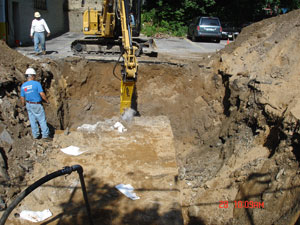 The goal of soil contamination clean up is to create the most comprehensive, effective, long-lasting remedial treatment possible to protect the future health of people and our environment. Engineers, hydrogeologists and usually a host of other professionals work together to create the best possible remedial design.
The goal of soil contamination clean up is to create the most comprehensive, effective, long-lasting remedial treatment possible to protect the future health of people and our environment. Engineers, hydrogeologists and usually a host of other professionals work together to create the best possible remedial design.
Often there are multiple methods or technologies that can be used to mitigate impacts of soil contamination. Using anenvironmental database management system can significantly improve the evaluation process, enabling better decision-making to arrive at a final plan that truly works, based on time and resources available.
An EDMS exemplifies technology at its best, giving your team an electronic working partner that can help in numerous ways. Here are five:
- Faster investigative and study process. An EDMS streamlines workflow. It can take on tedious clerical work such as data entry and provide assistance with formula-based work such as conversions and calculations. Visuals and other reports are instantly available to help evaluate possible choices by making it easy for everyone to understand what they’re seeing.
- More thorough and more accurate evaluation of alternatives. An EDMS provides 24/7 accessibility, which supports a more inclusive and collaborative work process. Team members can quickly reference historical data instead of performing redundant work, and automatic data upload and calculations help eliminate human error. An EDMS also facilitates access to existing best practices and proven soil contamination clean up alternatives, to ensure consideration of the broadest possible scope of options.
- Strongest clean up plan development. An EDMS allows detailed customization of queries, reports, etc. to ensure all potential alternatives – including leading-edge and lesser-known possibilities — are not only considered but completely analyzed. This ensures every soil contamination plan reflects the strongest available option.
- Most cost-effective clean up plan development. An EDMS makes it faster and easier to estimate and compare all the costs surrounding clean up alternatives, to arrive at the choice that best serves all parties involved.
- Compliance confidence. Using an EDMS ensures you always have all the information you need, right at your fingertips, to assure compliance with all applicable environmental regulations and procedures. You can easily prepare and submit correct, timely reports.
In short, an environmental database management system can assist and improve soil contamination clean up every step of the way, from planning and investigation through implementation and project oversight to any necessary follow-up monitoring.
